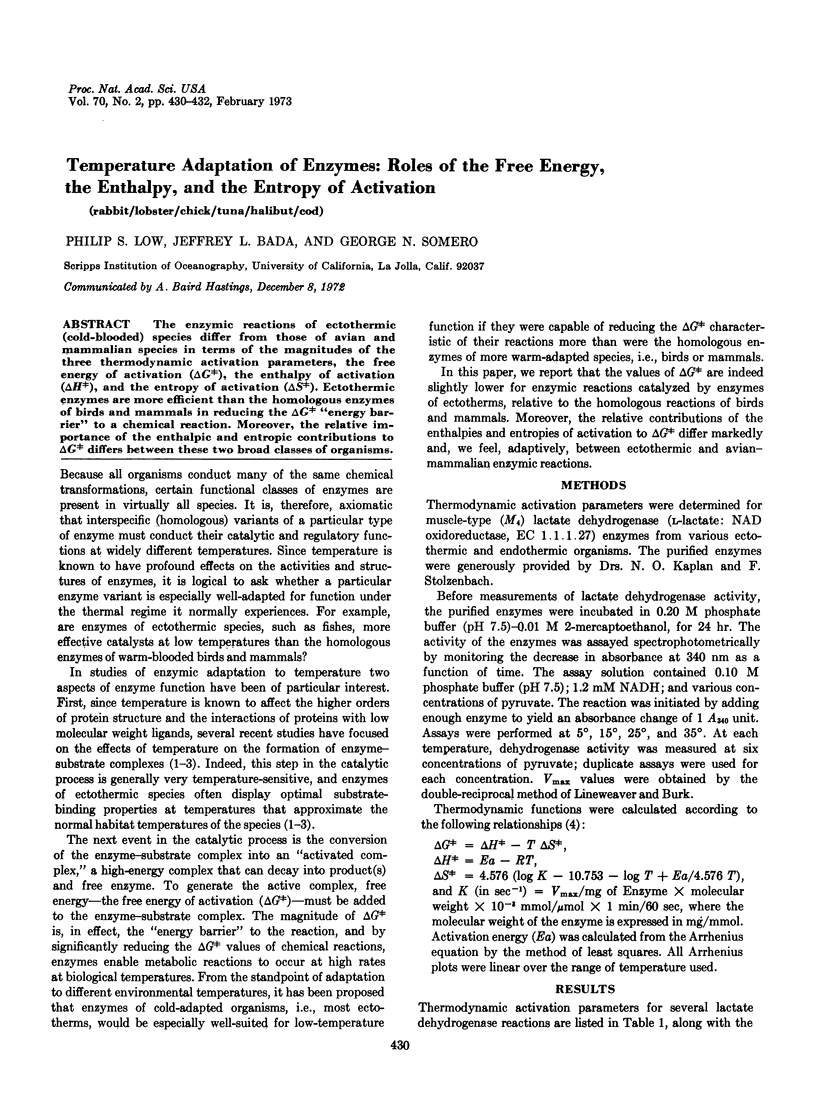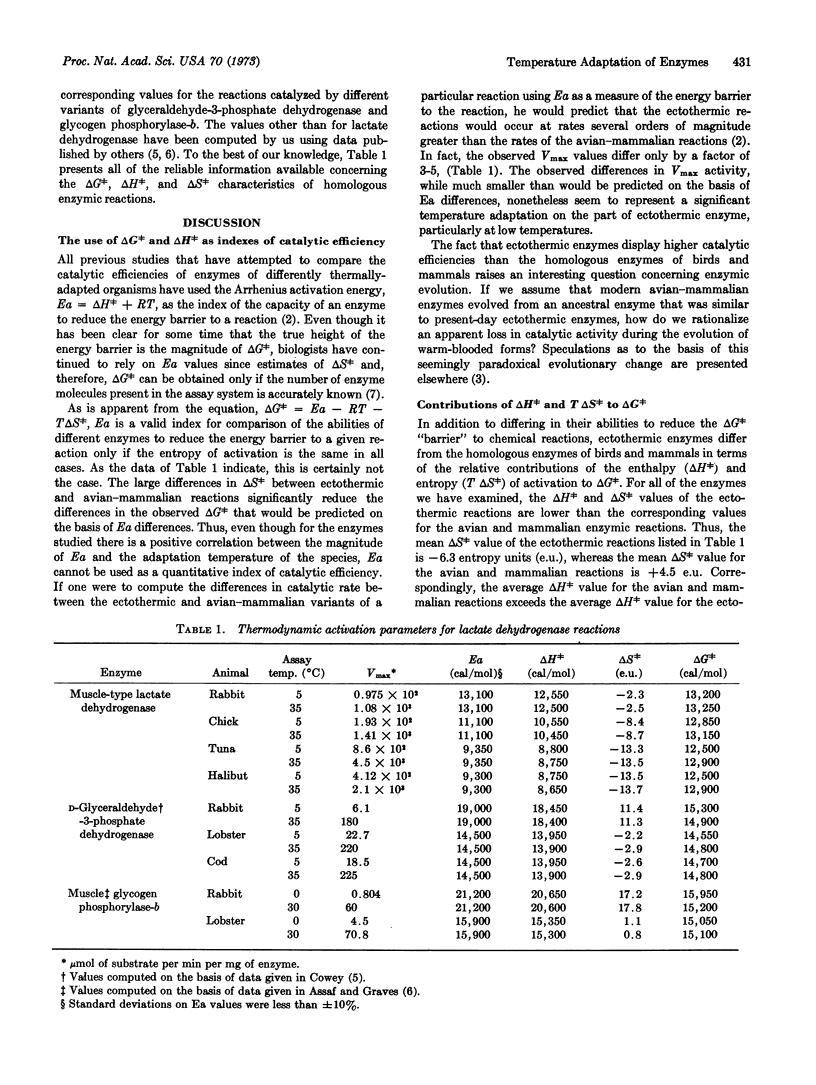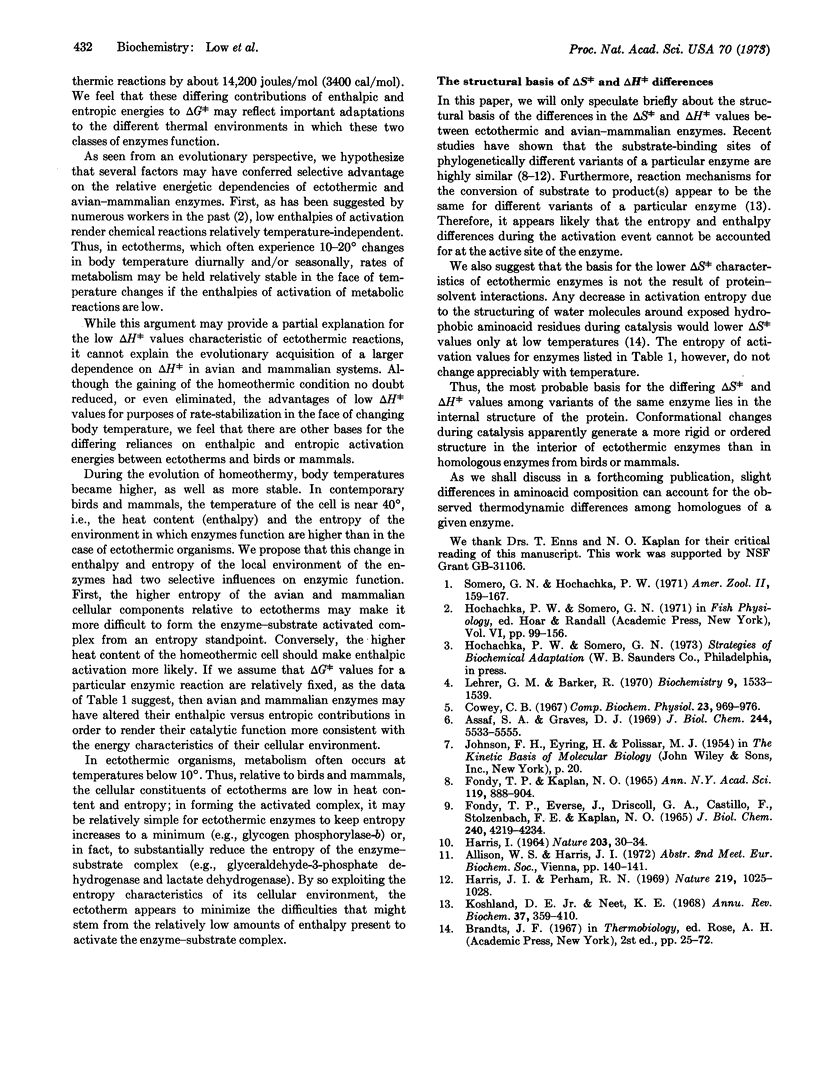Abstract
The enzymic reactions of ectothermic (cold-blooded) species differ from those of avian and mammalian species in terms of the magnitudes of the three thermodynamic activation parameters, the free energy of activation (ΔG⧧), the enthalpy of activation (ΔH⧧), and the entropy of activation (ΔS⧧). Ectothermic enzymes are more efficient than the homologous enzymes of birds and mammals in reducing the ΔG⧧ “energy barrier” to a chemical reaction. Moreover, the relative importance of the enthalpic and entropic contributions to ΔG⧧ differs between these two broad classes of organisms.
Keywords: rabbit, lobster, chick, tuna, halibut, cod
Full text
PDF


Selected References
These references are in PubMed. This may not be the complete list of references from this article.
- Assaf S. A., Grav D. J. Structural and catalytic properties of lobster muscle glycogen phosphorylase. J Biol Chem. 1969 Oct 25;244(20):5544–5555. [PubMed] [Google Scholar]
- Cowey C. B. Comparative studies on the activity of D-glyceraldehyde-3-phosphate dehydrogenase from cold and warm-blooded animals with reference to temperature. Comp Biochem Physiol. 1967 Dec;23(3):969–976. doi: 10.1016/0010-406x(67)90357-x. [DOI] [PubMed] [Google Scholar]
- Fondy T. P., Everse J., Driscoll G. A., Castillo F., Stolzenbach F. E., Kaplan N. O. The comparative enzymology of lactic dehydrogenases. IV. Function of sulfhydryl groups in lactic dehydrogenases and the sequence around the essential group. J Biol Chem. 1965 Nov;240(11):4219–4234. [PubMed] [Google Scholar]
- Fondy T. P., Kaplan N. O. Structural and functional properties of the H and M subunits of lactic dehydrogenases. Ann N Y Acad Sci. 1965 Jul 31;119(3):888–904. doi: 10.1111/j.1749-6632.1965.tb47450.x. [DOI] [PubMed] [Google Scholar]
- HARRIS I. STRUCTURE AND CATALYTIC ACTIVITY OF ALCOHOL DEHYDROGENASES. Nature. 1964 Jul 4;203:30–34. doi: 10.1038/203030a0. [DOI] [PubMed] [Google Scholar]
- Harris J. I., Perham R. N. Glyceraldehyde 3-phosphate dehydrogenase from pig muscle. Nature. 1968 Sep 7;219(5158):1025–1028. doi: 10.1038/2191025a0. [DOI] [PubMed] [Google Scholar]
- Koshland D. E., Jr, Neet K. E. The catalytic and regulatory properties of enzymes. Annu Rev Biochem. 1968;37:359–410. doi: 10.1146/annurev.bi.37.070168.002043. [DOI] [PubMed] [Google Scholar]
- Lehrer G. M., Barker R. Conformational changes in rabbit muscle aldolase. Kinetic studies. Biochemistry. 1970 Mar 31;9(7):1533–1540. doi: 10.1021/bi00809a009. [DOI] [PubMed] [Google Scholar]


